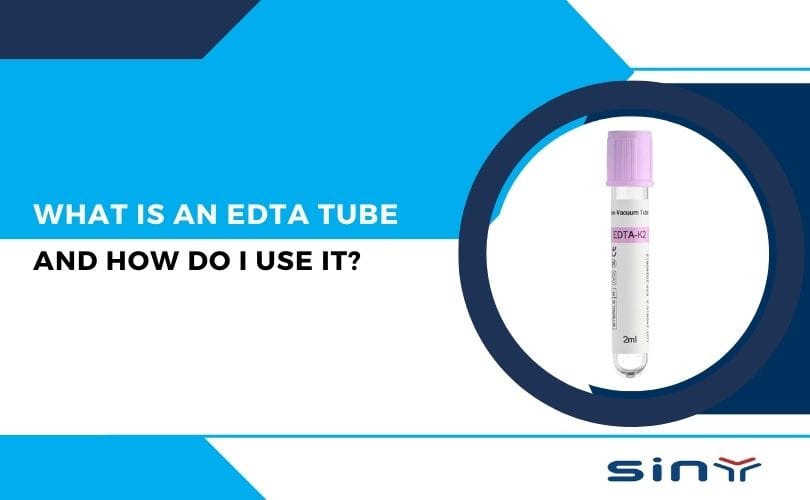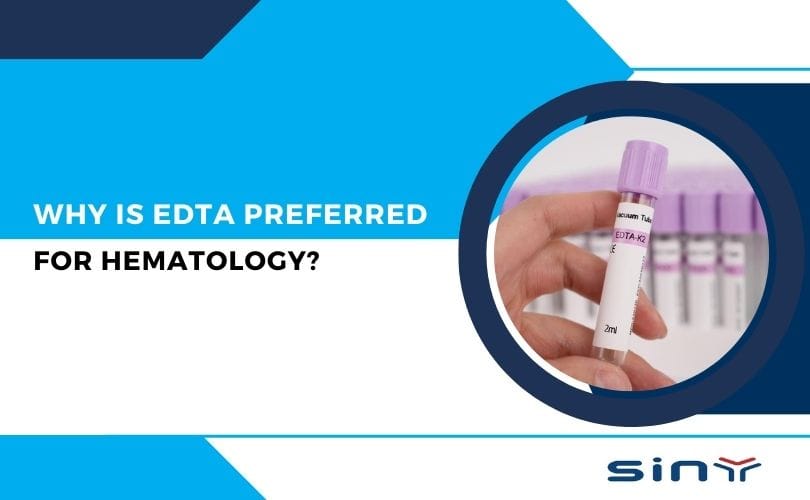EDTA and ACD Tubes Blood testing is at the heart of medical diagnostics. But here’s the kicker—blood is unstable outside the body. Once drawn, it begins to clot and degrade. To prevent this, laboratories use specific additives inside blood collection tubes. These additives stabilize the sample and preserve it for accurate testing.
Among the most widely used are EDTA (Ethylenediaminetetraacetic acid) tubes and ACD (Acid Citrate Dextrose) tubes. Both prevent clotting, but they work differently and serve distinct purposes. Understanding the difference is crucial for healthcare workers, lab technicians, and researchers who rely on accurate results.
What is an EDTA Tube?
An EDTA tube contains the anticoagulant Ethylenediaminetetraacetic acid, a chelating agent that binds calcium in the blood. Since calcium is essential for clotting, EDTA effectively halts this process, preserving the blood in its natural liquid state.
Key Details of EDTA Tubes:
Color Code: Typically purple or lavender caps.
Additive: EDTA (K2 or K3 salts).
Primary Use: Hematology (CBC, blood smears, blood typing).
Stability: Maintains cellular morphology for up to 24 hours.
Popular Products: Purple Top Blood Collection Tube, Lavender Top EDTA Tube.
These tubes are indispensable for hematology tests like complete blood counts because they prevent clumping of platelets and preserve the natural shape of red and white cells.
For more information, you can explore the EDTA Tube collection on the official website.
What is an ACD Tube?
An ACD tube contains Acid Citrate Dextrose, a solution made of citric acid, sodium citrate, and dextrose. Like EDTA, ACD prevents blood from clotting, but it works differently by reducing calcium activity through citrate binding. The added dextrose nourishes cells, making ACD particularly useful in preserving whole blood for longer-term studies.
Key Details of ACD Tubes:
Color Code: Usually yellow tops.
Additive: Acid Citrate Dextrose (A or B solution).
Primary Use: DNA testing, HLA typing, platelet studies, and blood banking.
Stability: Preserves cellular viability for days to weeks.
Specialty: Supports cell growth and is essential in genetic studies.
ACD tubes are commonly used when blood must be stored for molecular testing or transfusion medicine.
EDTA and ACD Tubes: Head-to-Head Comparison
Here’s a detailed comparison between EDTA and ACD tubes for clarity:
| Feature | EDTA Tubes | ACD Tubes |
|---|---|---|
| Cap Color | Purple / Lavender | Yellow |
| Additive | EDTA (K2 or K3) | Acid Citrate Dextrose |
| Mechanism | Chelates calcium ions | Citrate binds calcium, dextrose preserves cells |
| Best For | Hematology (CBC, ESR, blood typing) | Genetics, HLA typing, platelet studies, blood banking |
| Stability | 24–48 hours | Days to weeks |
| Cellular Morphology | Excellent preservation | Moderate preservation, better for cell viability |
| Examples | EDTA Tubes for Blood Collection | ACD Solution A or B tubes |
Choosing the Right Tube for Your Needs
Selecting the appropriate tube depends on the type of EDTA and ACD Tubes test or procedure you’re conducting. Here’s a quick guide to help you decide:
- For Hematology Tests: Use EDTA tubes, as they are specifically designed for CBC and blood smears.
- For Transfusions and Research: Opt for ACD tubes, which are better suited for long-term preservation and cell integrity.
For high-quality tubes, check out our Purple Cap Vacuum Blood Collection PET Glass EDTA K2 K3 Tube with ISO13485.
Real-World Applications of EDTA and ACD Tubes
EDTA Tubes Are Commonly Used For:
Complete blood count (CBC).
Peripheral blood smears.
Erythrocyte sedimentation rate (ESR).
Blood grouping and cross-matching.
Explore more on the EDTA tube supplier website.
ACD Tubes Are Commonly Used For:
DNA extraction for genetic testing.
HLA typing for organ transplantation.
Platelet function studies.
Long-term storage of blood in blood banks.
Wrapping It All Up
So, when comparing EDTA and ACD tubes, the key difference lies in their purpose: EDTA preserves cellular structure for hematology, while ACD maintains cell viability for genetic and platelet studies.
If you’re working in hematology, grab a Lavender Top EDTA Tube. For DNA work or long-term preservation, yellow-top ACD tubes are your go-to.
The bottom line? Choosing the right blood collection tube isn’t just about color—it’s about ensuring accurate results and supporting the right type of test.
For quality and ISO-certified products, check out the full EDTA Tube product range or connect directly via the Contact Us page.
FAQs About EDTA and ACD Tubes
1. Can EDTA and ACD tubes be used interchangeably?
No. Each tube is designed for specific tests, and using the wrong one could invalidate results.
2. Why is EDTA preferred for hematology?
Because it preserves blood cell shape and prevents clumping, essential for accurate counts.
3. Why does ACD contain dextrose?
Dextrose provides energy for cells, helping them survive longer for genetic and platelet studies.
4. What color cap is EDTA?
Mostly purple or lavender.
5. What color cap is ACD?
Yellow.
6. How long can blood last in EDTA vs ACD?
EDTA preserves morphology for up to 48 hours, while ACD maintains cell viability for several days or weeks.






